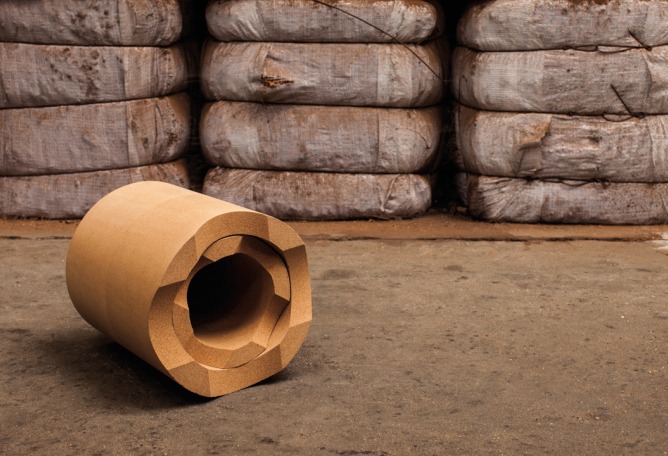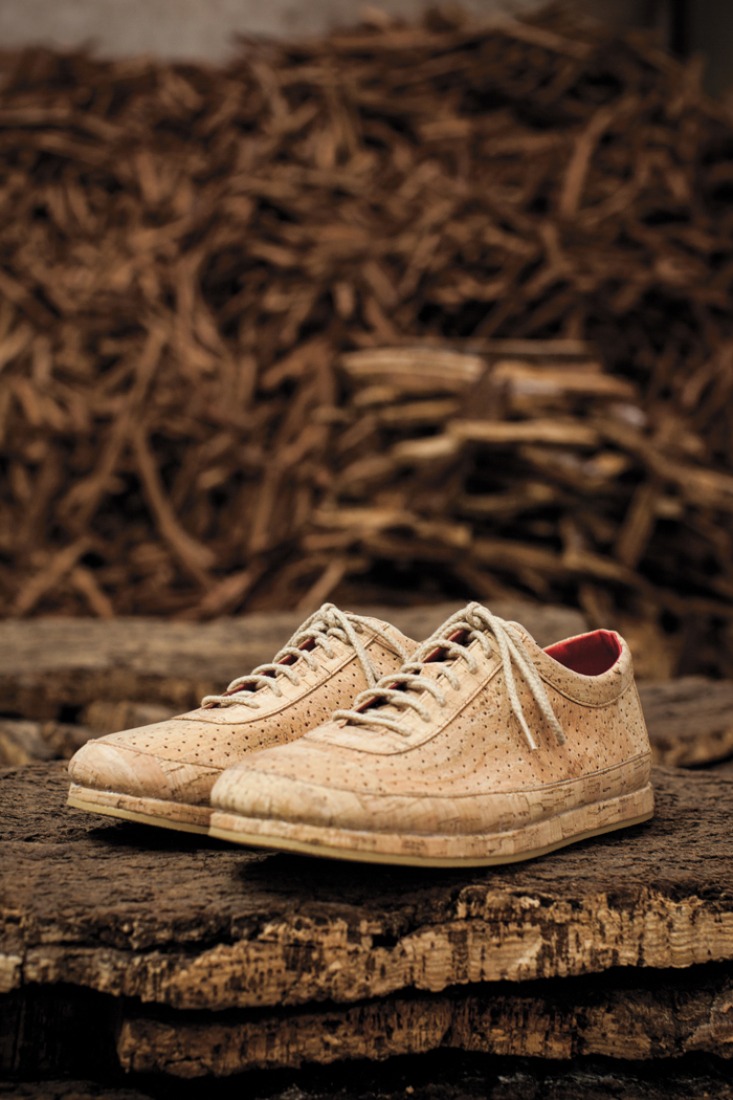METAMORPHOSIS is the exhibition which unlocks the opening week of EXD’13, Lisbon’s design & architecture Biennale and showcase for national and international innovation and creativity. This show, presented in partnership with the impressive Jerónimos Monastery (DPGC) and amidst its Cloisters, will highlight the visions of 10 distinguished product designers and architects. Curated by experimentadesign, METAMORPHOSIS is the result of a research project initiated in 2011, produced in partnership with Amorim, world’s leading producer of cork, on the potential and limits of this decidedly Portuguese material. The project has sparked innovative, creative and cutting-edge use of cork, thus expanding its horizons.
An invitation was extended to renowned contemporary designers and architects: Pritzker Prize winners, Álvaro Siza, Eduardo Souto de Moura and Herzog & de Meuron, along with celebrated architects Alejandro Aravena, Amanda Levete, João Luís Carrilho da Graça and Manuel Aires Mateus, as well as three top product designers, James Irvine, Jasper Morrison and Naoto Fukasawa. This experimental initiative gave its guest contributors creative carte-blanche to devise new terrain, functions and forms while using cork to explore new fields and typologies, in symbiosis or metamorphosis with other materials and properties, creating state of the art concepts for the 21st century. The creative group was involved in all stages of the process, working alongside with both the curators and industry. Using this approach, cork is situated at the level of conceptual development, working both on it and with it; taking full advantage of its remarkable adaptability and capacity to be transformed. The focus is on cork, not only because of its technical characteristics but also due to its sensory, dynamic and aesthetic qualities; exceeding the limitations that confined it to a bit role as material used almost entirely for infrastructures.
The outcomes of METAMORPHOSIS will undoubtedly have an impact on the creative community, and these new projects will inspire more extensive exploration of this age-old, environmentally-friendly and entirely sustainable material. METAMORPHOSIS will stimulate and inspire the creative community to explore and make the most of this age-old, environmentally-friendly, entirely sustainable material whose borders are still expanding.
Alejandro Aravena.
In this exhibition he explored two ideas: Soft Monoliths – following their research logic, where cork is used as skin, allowing for greater uniformity in terms of the architectural object – and Cork Clogs – inspired by dutch clogs, where cork is used as a lighter, stronger and waterproof material.
"We profited from its high insulation capacity, its low weight and the time captured in its skin. With an increasing global need for energy efficiency, it would be nice to see cork offering its advantages to a broader public."
Álvaro Siza.
For this project he drew two Stools of different dimensions, mutually coupled and where the cork offers an experience of extreme comfort and impact absorption capacity.
"Architecture and design can benefit from cork’s unique set of properties by being aware of them and being imaginative."
Amanda Levete.
Amanda Levete created Cork Kit, two modular objects that combined respond to various functions, from a more simple use as a stool or table, to a small stair or a wall element, with soundproofing properties.
"Cork kit exploits the characteristic of lightness and find ways of emphasising the tonal range of colour variations without adding natural pigments. The advantage of using this material is that you can have zero wastage, as cork is fully recyclable."
Eduardo Souto de Moura.
Fascinated with the pleasant feel that cork provides, he developed a set of Door Handles and a Handrail, where touch is the highlighted sense in the range of this material’s sensorial characteristics.
"As well as cork’s ecological, insulating and natural attributes, what I like is touching it, so I chose to "redesign" a door handle... to handle. Essentially, it was the touch; and, on top of that, the texture is lovely, compact, consistent, neutral and pleasant. It has a cream tone that works in virtually all environments; it’s not purple, red or canary yellow."
Herzog & de Meuron.
In the presented piece – a model of the Elbphilharmonie Hamburg philharmonic hall – the representative complexity of architecture seeks the benefits of the visual, aural, haptic and olfactory properties of cork.
"With cork we use a material that addresses the senses: visual, aural, haptic and olfactory."
James Irvine.
One of his last designs, Stow It, is a module to stow books or magazines, that when combined, forms a wall-shelf with acoustic properties, exploring cork’s sound absorption capacities.
"Cork and sound absorption are a natural match. It doesn’t get much better."
Jasper Morrison.
In this exhibition he developed two projects: Cork Tiles, small cork modules, that can create patterns when applied on walls or floors – a project which combines cork’s properties of sound and impact absorption with its natural look; and Cork Shoe, a pair of cork shoes where comfort and the natural aesthetics of the material are the answer to contemporary requirements.
"Cork is a material which is certainly worthy of attention in design. Its appeal lies in the combination of its old-world appeal and new-world technical capabilities."
João Luís Carrilho da Graça.
He devised a Cork Space which invites a pause, contemplation or meditation, benefiting from cork’s sensorial and aesthetics properties.
"A light, white concrete obtained from incorporating cork aggregates, this material boasts unique and interesting features, both technically (it is lightweight and a good insulator) and in its form (it is both very attractive and tactile), where the characteristics of cork are transferred to concrete."
Manuel Aires Mateus.
He devised a Cork Space which invites a pause, contemplation or meditation, benefiting from cork’s sensorial and aesthetics properties.
"Cork, which is a natural material with countless physical attributes, can be very expressive. In addition to its thermal, acoustic and ecological qualities, it communicates something sensory and aesthetic."
Naoto Fukusawa.
For this exhibition he produced two Benches with different heights, where he places in evidence the smoothness and comfort of cork.
"Cork is known for its natural temperature-regulating properties and it is known to maintain a similar temperature to our own bodies, thus providing a unique connection between us and the product. As a result, this bench offers a very comfortable experience."
Venue.- Mosteiro dos Jerónimos. Praça do Império 1400-206 Lisbon, Portugal.
Dates.- 7 November - 22 December 2013.









































